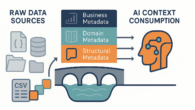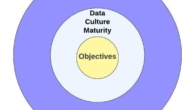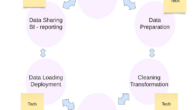Why Agentic AI Matters: Amazing Innovations for Data Platform Efficiency
Agentic AI is the new focus in the evolving world of AI. Since agentic AI systems are independent agents that can reason, they are quite different compared to traditional AI models such as ChatGPT that generate text only. These systems can decompose complex tasks, perform them autonomously, adapt to various levels of operational conditions, and perform self-corrections when the situation requires it.
Bill Gates recently imagined a world where AI agents would take care of the planning of everyday life — a trip, booking of a service or managing a complex calendar of events. These smart agents analyze user knowledge to make choices or to act on them. here
Agentic AI has the capacity to revolutionise business processes in the enterprise context. Today, this article will explain the innovations of agentic AI in the Data Platform management.
Last year I talked about Data Engineer leveraging GenAI for productivity here. But as world is evolving with innovations in AI, I put my prospective how Data engineering platforms will shape up in the future. Of course, this will not happen tomorrow but “constructive thoughts with clear a vision” can change the future of data landscape.
The Evolution from Generative AI to Agentic AI
While generative AI systems like large language models excel at producing content based on prompts, agentic AI represents a significant leap forward. These systems possess the autonomy and reasoning capabilities to decompose complex tasks, execute them independently, and—perhaps most importantly—adapt their approach based on feedback and changing circumstances.
Unlike traditional AI models that simply respond to queries, agentic AI can proactively manage entire workflows. Imagine systems that don’t just answer questions about your data but actively monitor, maintain, and optimize your entire data pipeline with minimal human intervention.
The Current State of Data Management
Today’s enterprise data architecture typically follows a multi-layered approach:
- Data ingestion into a Bronze layer (raw data)
- Cleansing and standardization into a Silver layer
- Modeling and transformation into a Gold layer for consumption
However, the reality in most enterprises is far messier. We frequently see fragmentation between DataOps and MLOps pipelines, with redundant processing and transformation occurring across different systems. Data scientists often need to recreate transformations that have already been performed in the data warehouse, leading to inefficiencies and inconsistencies.
Despite efforts from cloud providers like Snowflake, Google, and AWS to bridge this gap with tools like Snowpark Python API, BigQuery ML, and Redshift Data API, the fundamental challenge remains: our data engineering processes are still largely manual, reactive, and siloed.
How Agentic AI Will Transform Data Engineering
The application of agentic AI to data engineering promises to address these longstanding challenges through autonomous, intelligent systems that can:
I – Automate End-to-End Data Cataloging
A network of specialized agents can revolutionize how organizations discover, classify, and manage their data assets:
1. Supervisor Agent: The Strategic Overseer
At the heart of the ecosystem, the Supervisor Agent acts like a project manager for your data catalog. It continuously scans across all enterprise systems—databases, file shares, cloud storage, data lakes, and more—to detect newly onboarded or modified data sources. But it doesn’t treat every update equally: using configurable business rules (e.g., revenue impact, data sensitivity, team priorities), it assigns each source a “relevance score.”
- Continuous scanning
Through scheduled polling and event-driven hooks, the Supervisor Agent never sleeps. Whether a new table appears in your ERP system or a fresh CSV lands in an S3 bucket, this agent flags it immediately. - Business-aware task assignment
By integrating with your business glossary and governance policies, the Supervisor prioritizes high-value sources—say, quarterly sales reports—over less critical ones, then dispatches Discovery Agents to dig deeper.
This strategic triage ensures that your organization’s most important data gets cataloged first, avoiding wasted cycles on low-impact assets.
2. Discovery Agent: The Metadata Miner
Once a source is flagged, the Discovery Agent takes over. Think of it as an automated data detective: it inspects each table, file, or API endpoint to identify entities (customers, products, transactions) and the relationships between them (e.g., which orders belong to which customers).
- Schema and content parsing
By reading column names, data types, and sample values, the agent infers whether a field is a “date,” a “person name,” or even a custom business entity like “SKU.” - Relationship inference
Matching foreign-key patterns or semantic similarities (e.g., “cust_id” in two tables), it constructs entity-relationship diagrams without human intervention. - Automated metadata tagging
Leveraging natural language processing and your organization’s glossary, it assigns descriptive labels, data classifications (PII, financial), and even suggested retention policies.
With no manual tagging required, your catalog rapidly fills with rich, standardized metadata that users can search, explore, and trust.
3. Integration Agent: The Connector
A catalog is only as fresh as its data. The Integration Agent ensures that your catalog stays in sync with the live systems where data lives—ERPs like SAP, CRMs like Salesforce, cloud data warehouses, and bespoke applications.
- Seamless connector library
Prebuilt adapters handle authentication, API quirks, and data extraction for a wide variety of platforms. - Real-time updates
Through streaming services, change-data-capture, or webhook subscriptions, the agent picks up schema changes or new data as they happen, updating the catalog without intervention. - Scalable orchestration
Whether you’re onboarding a handful of systems or hundreds, the agent’s distributed architecture ensures high throughput and fault tolerance.
Real-time integration means that your catalog never goes stale—analysts and data scientists always work with an up-to-date inventory.
4. Validation Agent: Data Quality Guardian
Data catalogs are only useful if their metadata is accurate. The Validation Agent enforces quality by running a battery of automated checks on both the data and the relationships uncovered by discovery.
- Consistency checks
It verifies that column definitions in upstream and downstream systems match expected types and formats. - Duplicate detection
By fingerprinting table schemas and sample records, it spots redundant tables or overlapping datasets and flags them for review. - Relationship validation
Confirming inferred joins or foreign-key mappings against referential-integrity constraints ensures that lineage diagrams reflect reality.
When issues arise—say, inconsistent date formats or orphaned records—the Validation Agent not only alerts data stewards but can also trigger corrective workflows.
5. Observability Agent: The Compliance Sentinel
Finally, the Observability Agent provides the governance layer that keeps your data catalog compliant, secure, and traceable over time.
- Data lineage tracking
It captures end-to-end flows—from source ingestion through transformations to downstream dashboards—so you can answer “where did this figure come from?” in seconds. - Policy enforcement
Integrating with your organization’s security and privacy rules, it automatically applies access controls, masking, or encryption flags to sensitive assets. - Regulatory compliance
Built-in templates for GDPR, HIPAA, and SOX help maintain audit trails and generate compliance reports with minimal manual effort.
With observability baked into the platform, risk is reduced, and trust in your data ecosystem grows.
The key difference here is that these agents don’t just perform predefined tasks—they learn from interactions, adapt to new data sources, and continuously improve their classification and metadata enrichment capabilities.
II – Reinvent Data Engineering and Warehousing
1. Supervisor Agents: Dynamic Orchestration
At the core of an agentic ETL platform, the Supervisor Agent functions like an autonomous conductor:
- Hybrid workload management
It seamlessly schedules both batch jobs (e.g., nightly data warehouse updates) and real-time streams (e.g., Kafka or change-data-capture feeds), ensuring that neither starves the other of resources. - Adaptive resource allocation
By monitoring system metrics—CPU, memory, network throughput—the Supervisor dynamically scales processing clusters up or down, shifting workloads to off-peak windows or spinning up additional nodes when demand surges. - Policy-driven prioritization
Business rules (SLA commitments, cost budgets, data criticality) inform which pipelines receive priority during contention, guaranteeing that mission-critical pipelines stay on track even under pressure.
This level of orchestration replaces static cron schedules with a living system that allocates compute and I/O where it’s needed most, automatically.
2. ETL Agents: Autonomous Pipeline Management
Once tasks are dispatched, ETL Agents take ownership of entire data pipelines from ingestion through delivery:
- Schema-aware extraction
As source schemas evolve—new columns in a CRM export, renamed tables in an ERP—the ETL Agent detects changes via metadata comparisons and adjusts its extraction queries on the fly. - Transformation elasticity
Business logic transformations (data cleansing, joins, aggregations) are expressed in modular, versioned components. If incoming data distributions shift—for example, new currency codes or unexpected null rates—the agent tunes filter thresholds or mapping rules automatically. - Self-healing retries
In the face of transient errors (network hiccups, API rate limits), the agent implements backoff strategies, alerts downstream components of potential delays, and resumes without manual intervention.
By embedding schema and data-profiling intelligence, ETL Agents ensure that pipelines remain robust and accurate as underlying systems change.
3. Quality Agents: Proactive Data Integrity
High-value analytics demand high-quality data. Quality Agents patrol pipelines and datasets, proactively safeguarding integrity:
- Anomaly detection
Statistical models and machine-learning techniques identify outliers in record volumes, key distributions, or metric trends—e.g., a sudden dip in daily sales records or a spike in null customer IDs. - Rule-based validations
Predefined checks (range constraints, referential integrity, data type compliance) run on each batch or streaming window, with violations flagged or quarantined. - Automated remediation
Where possible, minor issues—trivial formatting errors, common typos—are auto-corrected. For more complex anomalies, the agent routes alerts to data stewards with diagnostic context and suggested fixes.
Continuous quality monitoring means that errors are caught—and often fixed—before they snowball into incorrect reporting or downstream failures.
4. Modeling Agents: Schema and Index Optimization
Efficient querying and storage depend on well-designed schemas and indexes. Modeling Agents automate this tuning based on actual usage:
- Usage-pattern analysis
By tracking query workloads—frequently joined columns, heavy filter predicates—the agent identifies which tables and fields benefit most from indexing or partitioning. - Dynamic schema evolution
As new analytics requirements emerge, the agent proposes schema extensions (e.g., adding summary tables or materialized views) and, after validation, applies them during low-traffic windows. - Cost-performance balancing
Table clustering and index creation incur storage and maintenance overhead. The agent weighs query speed gains against cost impacts, retaining only those optimizations that deliver net benefit.
This continuous feedback loop ensures data models remain aligned with evolving access patterns, without a DataOps manually reviewing Infra logs.
5. Observability Agents: Pipeline Performance Tuning
Finally, Observability Agents provide the “eyes on glass” for end-to-end pipeline health and efficiency:
- Telemetry aggregation
Metrics from each stage—ingestion latency, transformation CPU time, load throughput—are collected into a unified observability service. - Cost-speed tradeoff alerts
If a pipeline’s compute costs spike without corresponding performance gains, the agent suggests configuration tweaks (e.g., smaller worker instances, batched commits) or resource reallocations. - SLA compliance tracking
Real-time dashboards display pipeline success rates and latencies against agreed-upon SLAs, with automated notifications when thresholds are at risk.
By continuously fine-tuning configurations, the Observability Agent maintains an optimal balance between operational expense and data freshness.
A Self-Optimizing, Future-Ready ETL Platform
When Supervisor, ETL, Quality, Modeling, and Observability Agents collaborate, the result is a self-optimizing data ecosystem:
- Adaptive scheduling keeps pipelines running smoothly under diverse workloads.
- Schema-aware processing ensures resilience against upstream changes.
- Proactive quality checks catch issues before they cascade.
- Dynamic modeling guarantees fast, cost-efficient query performance.
- Continuous observability provides actionable insights and corrective feedback.
Together, these agents eliminate the need for teams to babysit ETL jobs, freeing data engineers to focus on higher-value tasks—like designing new analytics products or refining data strategy. As business needs evolve, the platform learns and adjusts autonomously, delivering reliable, high-quality data at scale. Agentic ETL is not just an upgrade; it’s a paradigm shift toward truly intelligent, self-governing data infrastructure.
The Reference Architecture for Agentic AI Data Management
To realize this vision, we need a comprehensive platform architecture consisting of:
- Reasoning Module: The brain of the system that decomposes complex tasks into manageable components and adapts execution strategies based on feedback
- Agent Marketplace: A registry of specialized agents with well-defined capabilities and constraints
- Orchestration Module: A system to coordinate multiple agents, monitor their performance, and adjust resource allocation
- Integration Module: Components that facilitate agent-to-agent communication and integration with enterprise systems
- Memory Management: Mechanisms for sharing context between tasks and maintaining execution state over extended periods
- Governance Layer: Controls ensuring compliance, security, privacy, and explainability
The most sophisticated implementations will utilize Chain of Thought (CoT) methodologies to break down complex tasks and vector databases to maintain contextual awareness across long-running operations.
Real-World Implications
The practical impact of agentic AI on data engineering will be profound:
- Reduced Time-to-Insight: By automating the entire data pipeline from discovery to analysis, organizations can dramatically shorten the time required to derive value from data
- Adaptive Data Infrastructure: Systems that automatically evolve as data volumes, structures, and business requirements change
- Proactive Data Governance: Rather than reactive monitoring, agentic systems can actively enforce policies and identify potential compliance issues before they become problems
- Unified DataOps and MLOps: The artificial separation between data engineering for BI and for ML can finally be eliminated
Consider how a financial institution might leverage this technology: When new regulatory requirements emerge, instead of launching a months-long compliance project, agentic AI could automatically identify affected data assets, modify relevant governance policies, adjust pipelines to capture new required elements, and document the changes for audit purposes—all with minimal human intervention.
Challenges and Considerations
Despite its transformative potential, implementing agentic AI for data management presents significant challenges:
1. Technical Maturity of AI Agents
- Contextual Understanding
Current AI excels at narrow tasks but often lacks the deep contextual awareness needed to interpret diverse enterprise schemas or evolving business rules. - Autonomous Decision-Making
Agents must make safe, reliable choices (e.g. schema changes, resource scaling) without human sign-off—yet today’s models aren’t robust enough to guarantee zero false positives or unintended side-effects.
2. Legacy System Integration
- Proprietary APIs & Protocols
Many ERPs, CRMs and on-premises databases expose custom or poorly documented interfaces, making it hard for Integration Agents to automate extraction and change-capture. - Monolithic Architectures
Legacy platforms often bundle compute, storage, and metadata together, obstructing the fine-grained observability and dynamic scaling that agentic designs require.
3. Data Quality & Governance
- Incomplete Metadata
Without a reliable business glossary or data catalog to bootstrap from, Discovery and Quality Agents may misclassify fields or improperly infer relationships. - Changing Compliance Requirements
As privacy laws (GDPR, CCPA, HIPAA) evolve, Observability Agents must adapt their policy-enforcement logic—and manual legal reviews can’t keep pace.
4. Explainability & Trust
- Opaque Decision Processes
When an agent automatically adjusts a schema or quarantines records, data teams will demand clear audit trails—yet many AI-driven inferences remain “black boxes.” - User Acceptance
Data stewards and engineers may distrust autonomous fixes or optimizations unless agents provide human-readable justifications and rollback mechanisms.
5. Resource Management & Cost Control
- Dynamic Scaling Complexity
Supervisor Agents that spin up clusters or reallocate nodes in real time risk runaway costs without hard-coded guardrails. - Performance vs. Budget Trade-offs
Observability Agents must balance compute speed against cloud charges—yet cost modeling in the face of unpredictable workloads remains an unsolved planning problem.
6. Skills & Organizational Readiness
- Talent Shortage
Building and maintaining these intelligent agents requires expertise across AI/ML, distributed systems, DevOps, and domain-specific data engineering—profiles that are in high demand and short supply. - Process Transformation
Shifting from manual, ticket-driven ETL workflows to agentic pipelines demands new operating models, change-management programs, and revised team responsibilities.
7. Continuous Monitoring & Maintenance
- Drift Detection
As underlying data distributions or business semantics shift, agents need retraining or rule updates—without robust drift-detection frameworks, performance will degrade over time. - Versioning & Rollbacks
Managing agent code, pipelines, and model versions at enterprise scale introduces a maintenance burden akin to software-release management.
8. Security & Compliance Risks
- Attack Surface Expansion
Autonomous agents with wide system access create new attack vectors—compromised credentials or malicious inputs could derail entire data flows. - Audit & Traceability
Regulatory audits require proof of “who did what, when, and why.” Ensuring every agent action is logged immutably is technically and operationally challenging.
Bringing agentic ETL and data-catalog architectures into production isn’t just a matter of plugging in some models. You’ll need to evolve your technology stack, governance frameworks, team skills, and operational practices in parallel—while carefully managing risk, cost, and trust at every step.
Conclusion
Agentic AI represents the next evolutionary step in data management—moving from systems that require constant human direction to autonomous platforms that can reason about data, adapt to changing requirements, and proactively optimize operations.
While we’re still in the early stages of this transformation, forward-thinking organizations are already laying the groundwork by experimenting with limited-scope agents for specific data management tasks. Those who embrace this paradigm shift will gain significant competitive advantages through more responsive, efficient, and intelligent data operations.
The data engineering ecosystem of tomorrow won’t just be faster or more efficient—it will fundamentally operate on different principles, with human experts focusing on strategy and oversight while autonomous agents handle the complexities of day-to-day data operations. For data professionals, this isn’t a threat but an opportunity to focus on higher-value activities while leaving the repetitive aspects of data management to capable AI systems.









Good notes, this opens though process in different direction.